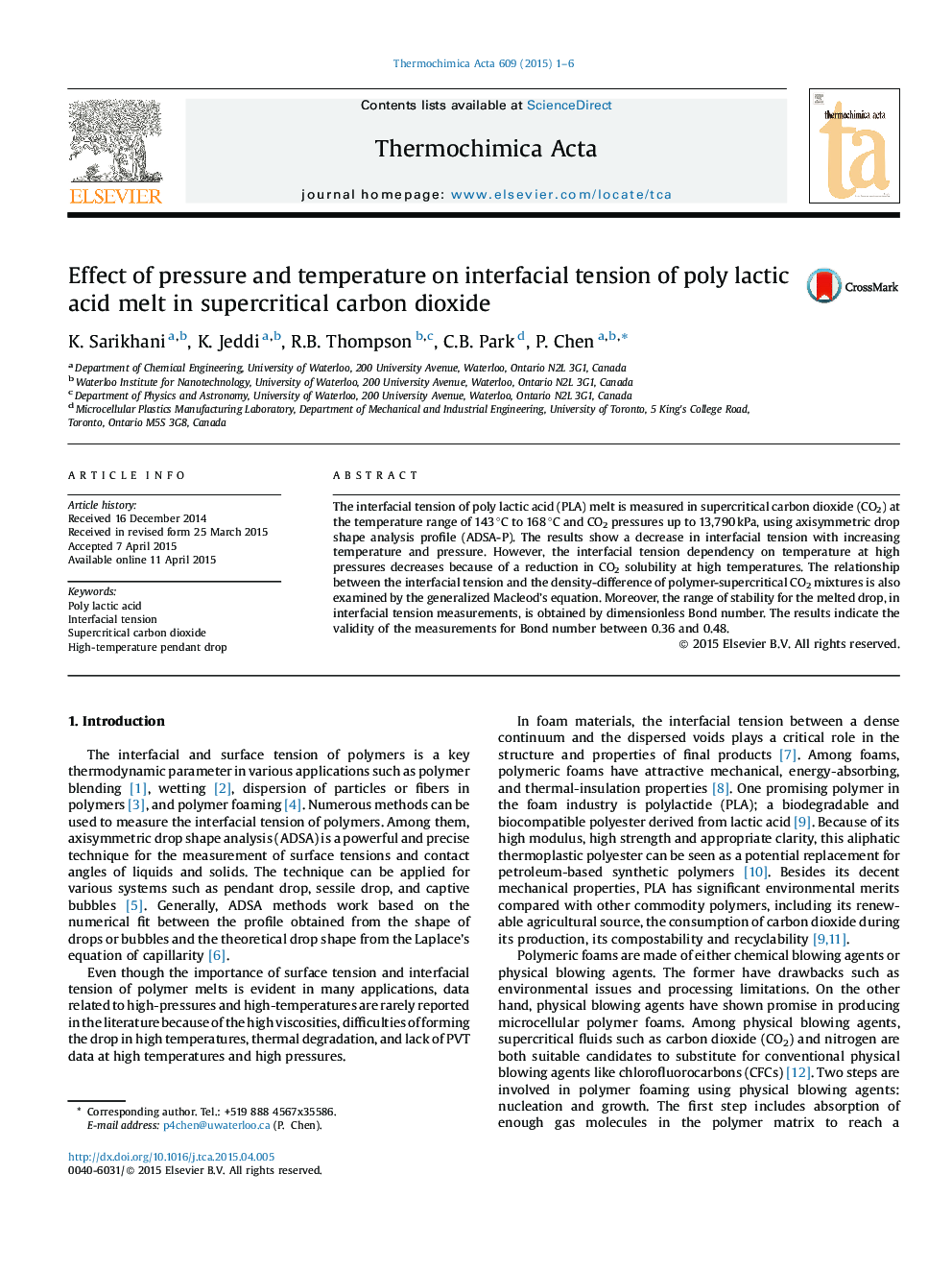| Article ID | Journal | Published Year | Pages | File Type |
|---|---|---|---|---|
| 672883 | Thermochimica Acta | 2015 | 6 Pages |
•Surface tension of PLA was measured at high temperatures.•Axisymmetric drop shape analysis profile (ADSA-P) pendant drop technique was used.•Effect of supercritical CO2 pressure on PLA interfacial tension was investigated.•Interfacial tension decreased with increasing temperature and pressure.•Polymer melt with Bond number between 0.36 and 0.48 formed stable drops.
The interfacial tension of poly lactic acid (PLA) melt is measured in supercritical carbon dioxide (CO2) at the temperature range of 143 °C to 168 °C and CO2 pressures up to 13,790 kPa, using axisymmetric drop shape analysis profile (ADSA-P). The results show a decrease in interfacial tension with increasing temperature and pressure. However, the interfacial tension dependency on temperature at high pressures decreases because of a reduction in CO2 solubility at high temperatures. The relationship between the interfacial tension and the density-difference of polymer-supercritical CO2 mixtures is also examined by the generalized Macleod’s equation. Moreover, the range of stability for the melted drop, in interfacial tension measurements, is obtained by dimensionless Bond number. The results indicate the validity of the measurements for Bond number between 0.36 and 0.48.
Graphical abstractFigure optionsDownload full-size imageDownload as PowerPoint slide
